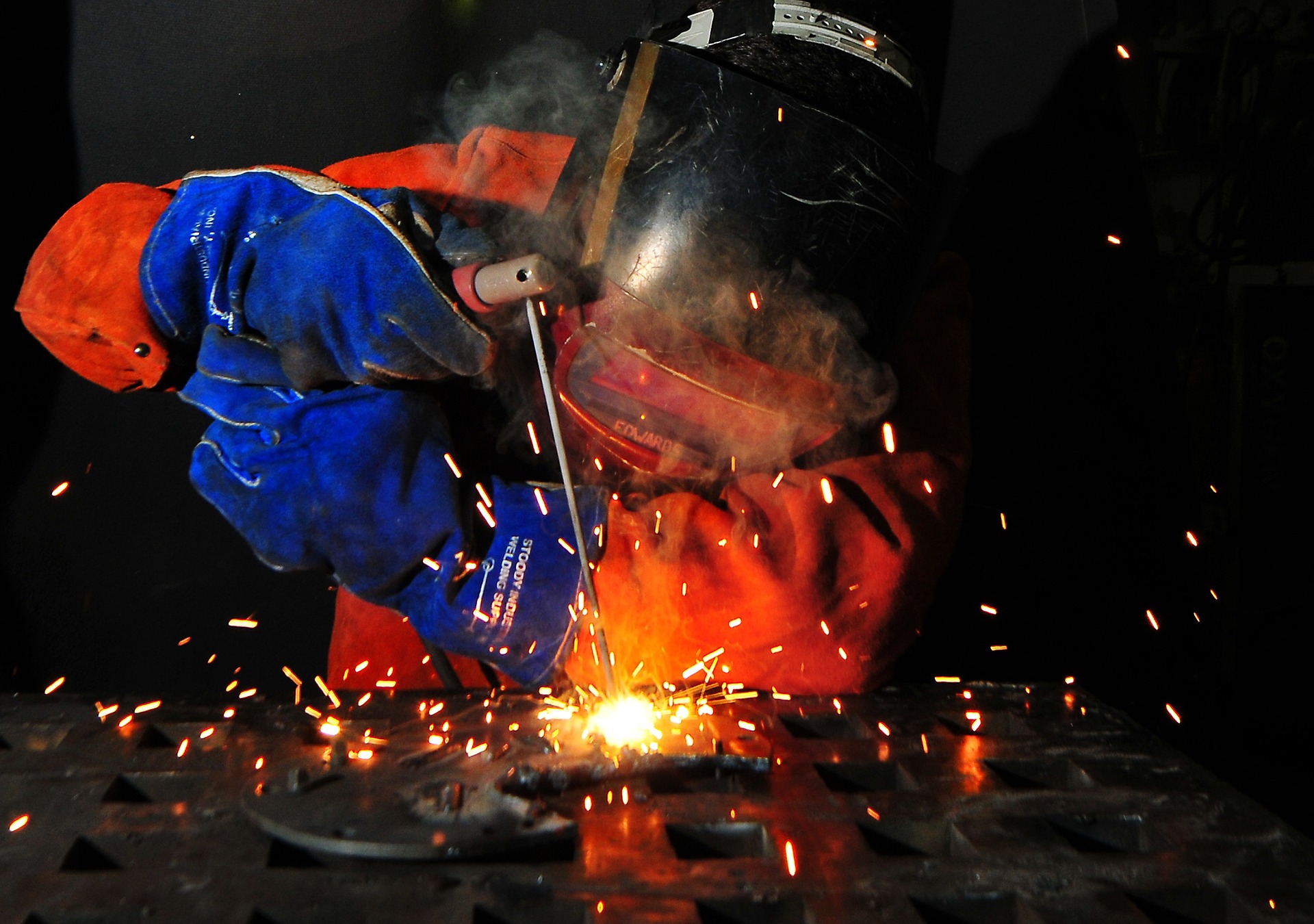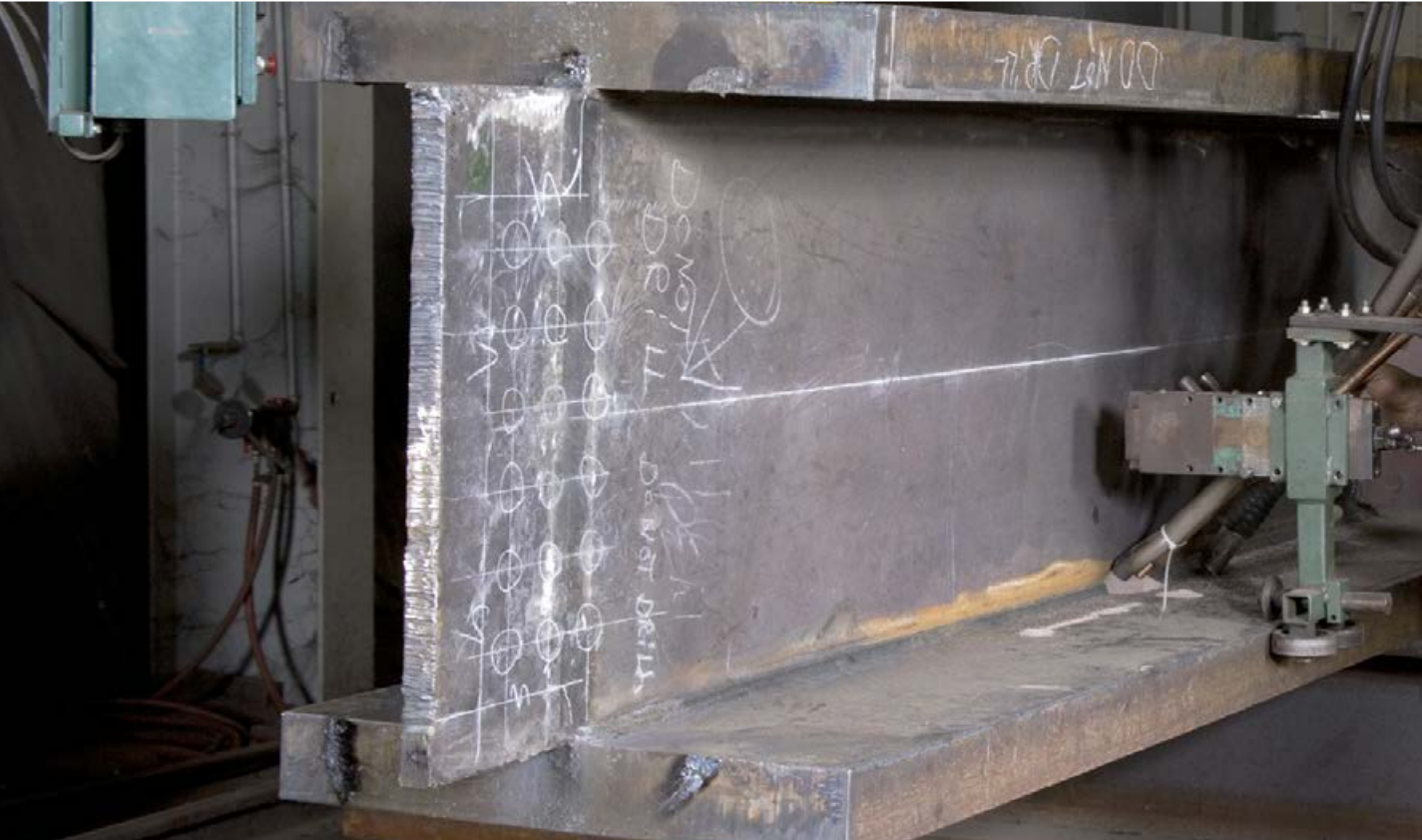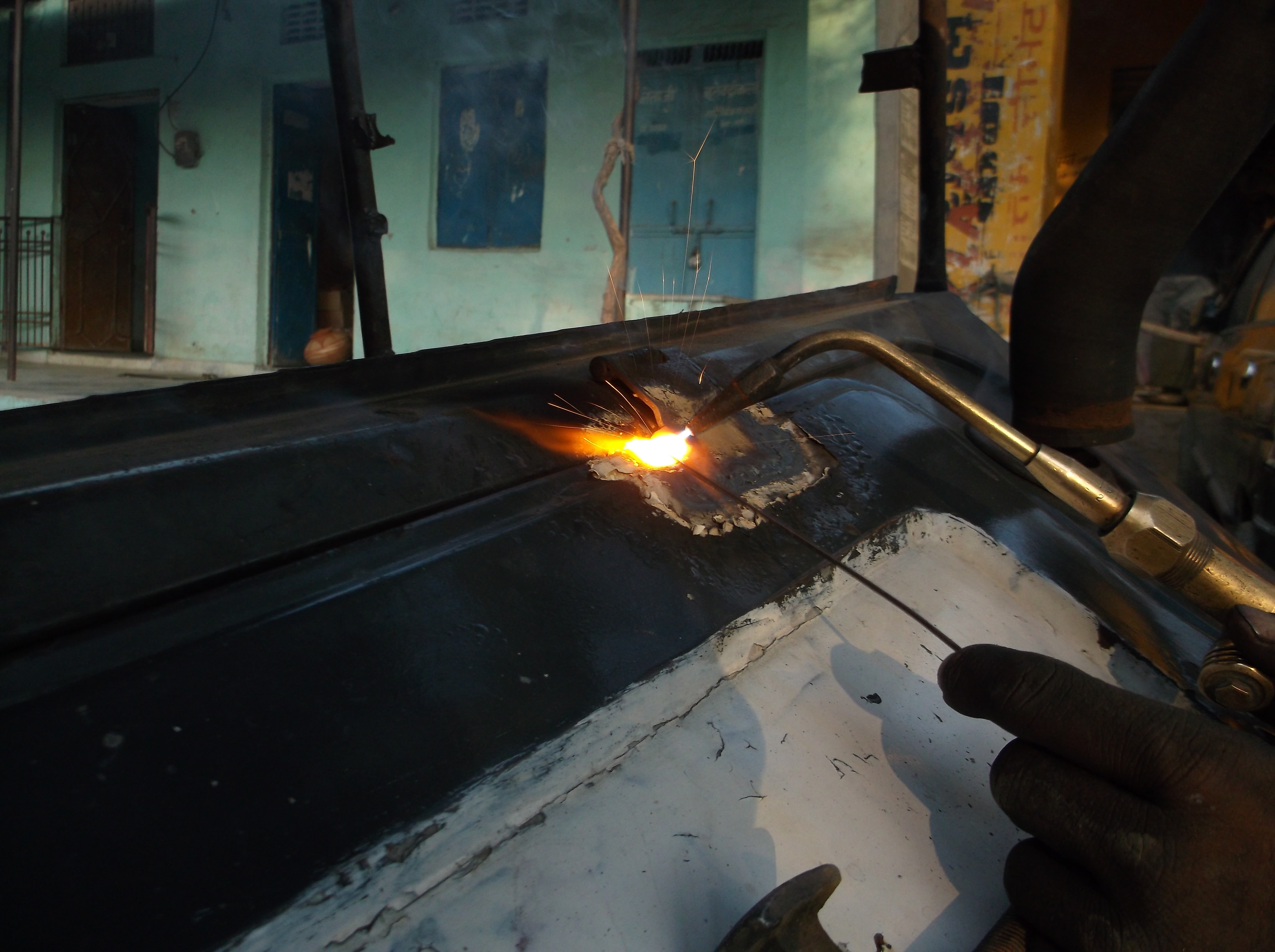MIG, TIG, Stick, and Everything in Between: A Beginner’s Guide to the Different Welding Processes
Oct 6th 2023
In this comprehensive guide, we'll break down the basics of welding, demystify the various welding techniques, and provide you with the knowledge needed to embark on your own welding projects with confidence. Whether you aspire to create artful metal sculptures, repair automotive components, or fabricate structural steel, this guide will serve as your roadmap to navigating the intricate landscape of welding.
So, if you've ever wondered about the differences between MIG, TIG, stick, and everything in between, you're in the right place. Let's dive in and uncover the fascinating world of welding, one process at a time.
Common Welding Processes
When it comes to welding, there are several common processes, each with its own unique characteristics, advantages, and applications. Understanding these processes is crucial for any beginner looking to embark on their welding journey. In this section, we'll explore three of the most widely used welding techniques: MIG, TIG, and stick welding.
I. MIG Welding (Metal Inert Gas)
Explanation of the process: Gas Metal Arc Welding (GMAW) includes both Metal Inert Gas Welding, also known as MIG welding, and Metal Active Gas Welding, also known as MAG welding. MIG is a versatile and relatively easy-to-learn welding process. It involves feeding a solid wire electrode through a welding gun, where it melts and fuses with the base metals. During this process, a shielding gas, typically a mixture of argon and carbon dioxide, is used to protect the weld from contamination.

Ideal applications: MIG welding is commonly used for welding thin to medium-thickness metals, making it suitable for applications such as automotive repairs, construction, and fabrication.
Advantages:
- Faster welding speed compared to other processes
- Minimal post-weld cleanup
- Suitable for a wide range of materials, including steel, stainless steel, aluminum, and flux core
Disadvantages:
- Limited when welding thick materials
- Requires a continuous supply of shielding gas
- Not as precise as TIG welding for intricate work
II. TIG Welding (Tungsten Inert Gas)
Explanation of the process: TIG welding, or Tungsten Inert Gas welding, is known for its precision and versatility. In this process, a non-consumable tungsten electrode is used to create an electric arc that melts the base metals. With the TIG process, the heat comes from an electric arc that streams between the electrode in a hand-held torch and the metal being welded. Filler rod is usually added to the puddle of molten metal during the weld. As with MIG welding, a shielding gas, often pure argon, is used to protect the weld pool.

Ideal applications: TIG welding excels in applications where precision and control are paramount, such as aerospace, artistry, welding exotic metals, and more. Some materials that can be welded are aluminum, steel, stainless steel, nickel alloys, brass, bronze, copper, and even gold.
Advantages:
- Exceptional control and weld quality
- Suitable for welding thin and delicate materials
- Minimal spatter and fumes
Disadvantages:
- Slower welding speed compared to MIG welding
- Requires a higher level of skill and practice
- Not ideal for thick materials due to slower deposition rates
III. Stick Welding (Shielded Metal Arc Welding)
Explanation of the process: Stick welding, officially known as Shielded Metal Arc Welding (SMAW), is one of the oldest and most straightforward welding processes. It involves using a consumable electrode coated in a flux material which is held in an electrode holder. As the electrode is consumed, it releases a gas that shields the weld from impurities and contaminants.

Ideal applications: Stick welding is versatile and can be used for both indoor and outdoor applications, making it a popular choice for construction, pipeline welding, and maintenance and repair work.
Advantages:
- Suitable for welding in various conditions, including windy or rainy environments
- No need for an external shielding gas
- Versatile and can be used on a wide range of metals and alloys
Disadvantages:
- Slower compared to MIG welding
- Produces more slag and spatter, requiring post-weld cleanup
- Requires a higher level of skill to produce clean and strong welds
Understanding these common welding processes is one of the first steps toward becoming a proficient welder. The choice of which process to use depends on factors like the type of material, thickness, and the level of precision required for your specific welding project. In the next section, we'll delve deeper into how to choose the right welding process for your needs.
Other Welding Techniques
While MIG, TIG, and Stick welding are among the most commonly used welding techniques, there are several other methods worth exploring. In this section, we'll introduce you to three additional welding techniques: Flux-Cored Arc Welding (FCAW), Submerged Arc Welding (SAW), and Gas Welding (Oxy-Acetylene).
I. Flux-Cored Arc Welding (FCAW)
Explanation of the process: Flux-Cored Arc Welding (FCAW) is a welding method that combines elements of both MIG and Stick welding. Instead of a solid wire, FCAW uses a tubular wire electrode filled with flux. The flux not only protects the weld from contaminants but also generates a shielding gas when it melts. This process is often used for welding thick materials and in outdoor conditions.

Ideal applications: FCAW is commonly employed in heavy construction, shipbuilding, and structural steel fabrication due to its ability to produce strong welds in challenging environments.
Advantages:
- High deposition rates for efficient welding
- Suitable for welding thicker materials
- Works well in windy or drafty conditions
Disadvantages:
- Generates more fumes and slag than some other processes
- May require multiple passes for very thick materials
- Limited precision for fine work compared to TIG welding
II. Submerged Arc Welding (SAW)
Explanation of the process: Submerged Arc Welding (SAW) is a welding method that involves completely submerging the welding arc and the electrode under a layer of granular flux. This results in a highly efficient and controlled welding process, ideal for welding thick materials in a single pass.

Ideal applications: SAW is often used in the manufacturing of large steel structures, such as bridges, pressure vessels, and heavy machinery components. Sub arc welding is a wire-fed process best performed using mechanical equipment that wouldn't normally be able to be transported outside of a shop. Specific equipment can be used to make the welding process more mobile.
Advantages:
- Extremely high deposition rates for fast welding
- Exceptional penetration and weld quality
- Minimal fumes and spatter due to the submerged nature of the arc
Disadvantages:
- Requires a special welding setup, including a flux recovery system
- Limited flexibility in terms of positioning and mobility
- Typically, not suitable for thin materials
III. Gas Welding (Oxy-Acetylene)
Explanation of the process: Gas welding, also known as Oxy-Acetylene welding, is an older welding method that utilizes a combination of oxygen and acetylene gases to create a flame hot enough to cut and weld metals. This process is versatile and can be used for welding, brazing, cutting, and heating. Because this is an older method of welding and cutting, no electricity is required.

Ideal applications: Gas welding is often employed in automotive repair, plumbing, and metal sculpture due to its versatility and precise control.
Advantages:
- Precise control over the flame and temperature
- Suitable for joining various types of metals, including aluminum and stainless steel
- Affordability and versatility of application
Disadvantages:
- Slower welding speed compared to modern electric welding processes
- Limited suitability for thick materials
- Requires careful handling of high-pressure gases, making safety a top priority
Understanding these additional welding techniques expands your knowledge and capabilities as a welder. Each method has its strengths and weaknesses, making it important to choose the right one based on the specific requirements of your welding project. In the next section, we'll go over what factors to consider when choosing what welding processes you'd like to pursue. We'll also go over practical examples and the method of welding to use that best suites the needs of the project. Ultimately, becoming a skilled welder will mean you have experience in most types of welding. Depending on the career path you would want to take, specializing in a specific welding process might be more viable.
Choosing the Right Welding Process
As a beginner in the world of welding, one of the most crucial decisions you'll make is selecting the right welding process for your project. The choice of welding technique can significantly impact the quality of your welds and the success of your endeavors. To help you make an informed decision, we'll explore the factors to consider when choosing a welding process and provide practical examples of process selection.
A. Factors to Consider
Material Type and Thickness: The type of material you're working with plays a fundamental role in process selection. Some welding methods are better suited for specific materials. For instance, MIG welding is excellent for steel and aluminum, while TIG welding excels with thinner materials and exotic metals like titanium and magnesium. It is also vital to consider the thickness of the metal being welded. For example, if you are wanting to weld thick metal, TIG welding may not be the best choice.
Skill Level: Your level of experience and skill in welding should also influence your choice. Some processes, like stick welding, are more forgiving for beginners due to their ease of use, while TIG welding requires a higher level of precision and control.
Project Requirements: Consider the specific requirements of your project. Are you welding structural components that demand high strength and integrity, or are you working on decorative elements where appearance is critical? Some processes offer better control over aesthetics, such as TIG, while others prioritize strength and durability, such as MIG or stick welding.
B. Practical Examples
Example 1: Automotive Repair

Materials: For repairing a steel automotive component, MIG welding is a popular choice due to its ease of use and ability to handle moderate thicknesses.
Skill Level: Beginners can quickly learn to MIG weld for automotive repairs, making it accessible for DIY enthusiasts.
Project Requirements: In automotive repair, strength and durability are essential, and MIG welding provides a good balance between ease of use and performance.
Example 2: Artistic Metal Sculpture

Materials: Creating an intricate metal sculpture from stainless steel or aluminum requires precision, making TIG welding an excellent choice.
Skill Level: TIG welding demands a higher skill level, but the fine control it offers is crucial for intricate and aesthetically-focused projects.
Project Requirements: For artistic pieces, appearance is paramount. TIG welding produces clean, precise welds with minimal distortion, perfect for showcasing in artistry.
Example 3: Pipeline Welding

Materials: Pipelines often involve welding thick steel sections, making stick welding (SMAW) a preferred method due to its ability to penetrate deep into the material. Considering that pipeline welding is outdoors, SMAW allows for welding in undesirable weather conditions. At the same time, electrodes can be bent for welding hard to reach areas.
Skill Level: While Stick welding can be challenging to master, it's essential for industrial applications like pipeline welding.
Project Requirements: Pipeline welds must be incredibly strong and reliable to withstand harsh conditions, making Stick welding the go-to choice for this type of project.
By carefully considering these factors and examining practical examples, you can make an informed decision when choosing the right welding process for your specific needs. Remember that practice and experience will further refine your skills, regardless of the process you select.
